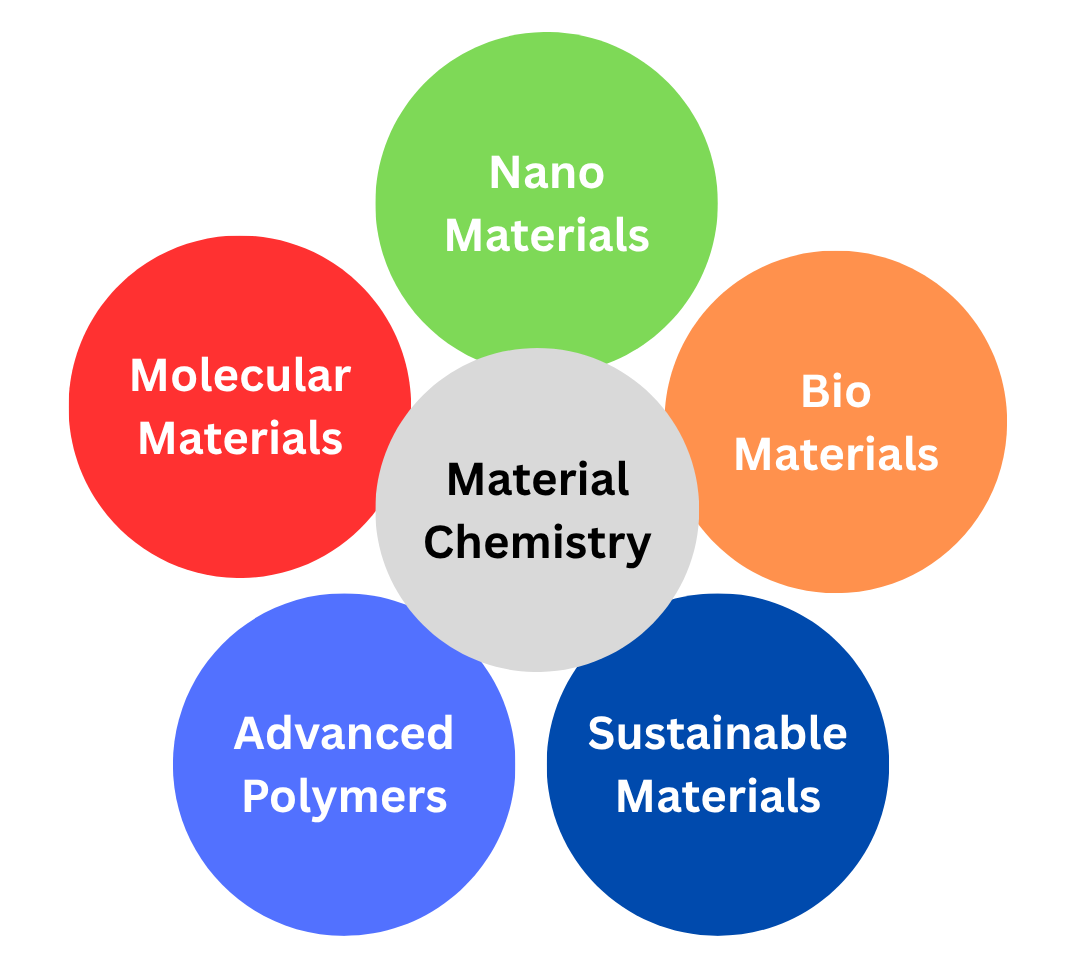Material Chemistry
At Videti, a leading Contract research and development organization (CRDO) in hyderabad, Material Chemistry plays a vital role in integrating chemistry, physics, and engineering to design materials with tailored properties for a wide range of applications, such as implants, wound healing patches, OLEDs, TADF, Fluorescent Molecules and pharmaceuticals. In drug development, it supports the creation of excipients, drug delivery systems, and solid dosage forms by enhancing bioavailability, stability, and controlled release profiles. Innovations such as nanomaterials and smart polymers enable targeted and controlled drug delivery, contributing to the advancement of precision medicine.

● Block-Co-Polymers
Block-co-polymers are copolymers composed of distinct polymer segments covalently linked into one chain. Their self-assembling ability enables controlled drug delivery and targeted release, as well as scaffolding for tissue engineering. In materials science, they provide enhanced mechanical, thermal, and optical properties and can respond to stimuli like pH or temperature, enabling smart systems. Advances in synthesis continue to expand their biomedical and material applications, offering versatile solutions for complex challenges.
● OLEDs (Organic Light-Emitting Diodes) and TADF (Thermally Activated Delayed Fluorescence)
OLEDs use organic semiconductors to emit light when electrified, offering thin, flexible, high-brightness displays with wide color ranges and low energy use. They are widely used in smartphones, TVs, wearables, and flexible screens due to their vivid, high-contrast visuals.
TADF materials boost OLED efficiency by converting energy-wasting triplet excitons into light-emitting singlets, eliminating the need for rare metals and reducing costs. This innovation enhances OLED performance and sustainability, paving the way for brighter, more energy-efficient displays and lighting.
● Fluorescent Molecules and High-Energy Materials
Fluorescent molecules absorb light at one wavelength and emit it at a longer, visible wavelength, making them vital for bioimaging, sensing, and advanced displays. Improvements in brightness, stability, and tunability are driving innovations in precision medicine, environmental monitoring, and OLED technology.
High-energy materials release large amounts of energy through chemical or physical reactions, powering aerospace, defense, and energy storage applications. Research focuses on enhancing energy density, safety, and controlled release, enabling advances in propulsion, sustainable batteries, and explosives with reduced environmental impact. Together, these materials are shaping the future of biotechnology and high-performance energy technologies.
